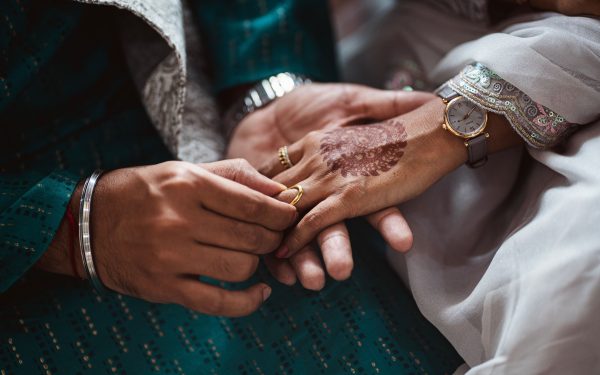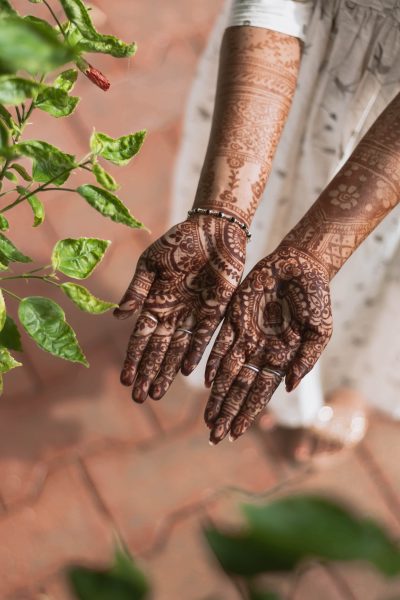In a Muslim wedding, you can expect the regional influence of the place where it is held to impact the wedding, as Islam is practiced in different ways across the world. However, it is vital to be aware of some key elements before attending one so that you know what etiquette to follow and what to expect.
What Should You Know About A Muslim Wedding Before Attending It?
Muslims consider marriage sacred, as it is one of their important responsibilities. Marriage symbolizes the coming together of two souls, which helps to preserve the religion and its culture. Muslim wedding cards are beautifully done with lovely detailing work, calligraphy, and soft shades. Here is a look at the important elements of a Muslim wedding:
1. Salat al-Istikhara: Once the marriage is fixed by the elders of the family, this information is sent to religious community heads so that they can pray to Allah to seek his blessings for the new couple.
2. Imam Zamin: The groom’s mother visits the bride’s home to show that she is welcomed into it. She shows this by giving gifts and sweets that she has brought along. She then gives the bride a gold or silver coin, which is wrapped in a silk scarf. The scarf is then tied by her to her daughter-in-law’s wrist. It is done right after the Salat al-Istikhara.
3. Mangni: It is the engagement ceremony in which both families declare the marriage union is going to take place between the two people. It is attended by close relatives and friends, and there is an exchange of rings between the would-be bride and groom. Many gifts, sweets, fruits, and money are also exchanged with the groom’s family, starting first with the bride’s family. This ring exchange is an official engagement declaration between them.

4. Manjha: The groom’s family sends a paste made from turmeric, sandalwood, and rosewater to the bride’s family for the Haldi ceremony to take place. Once it is received by the bride’s family, the women take the paste and take turns applying it to the bride’s face, hands, and feet. They then apply it to each other as well. The same ceremony occurs for the groom, and it is fun, relaxing, and full of warmth. This ceremony is considered a purification ritual, following which both the bride and groom must stay inside their homes until the wedding.
5. Mehendi: It is a ritual that occurs in the bride’s house. A professional or expert mehndi applicator is called to do the task of applying mehendi to the hands and legs. The most intricate designs are done to bring out a beautiful look and enhance the beauty of the bride. It is believed that when the mehendi is removed the following day, its darkness shows how much love is given by the groom’s family to her. During this ceremony, there is a song and dance, and some women in the family also apply it to their hands and legs.

6. Sanchaq: It is a ritual in which members of the groom’s family make a visit to the bride’s home but without the groom. They also bring along lots of gifts, sweets, jewelry, an outfit, and accessories for the bride, which are to be worn by her during the Nikah.
7. Baraat: The groom, along with male members of his family, arrives in a car that is beautifully decorated. This is done to the accompaniment of lively songs and dance.
8. Nikah: It is the wedding ceremony that begins with the Iman reading out verses from the Holy Quran. It is followed by prayers that invoke Allah’s blessings for the bride and groom. He asks the bride if she accepts the marriage, to which she replies, “Qubool Hai,” three times. This means I do, and the same question is asked of the groom, to which he replies the same three times. This is followed by the signing of the marriage contract.
Usually, couples spend some time considering various event venues and which would be most suitable for their wedding. There is no formal requirement for it to occur at a specific place, as long as the couple and the other people in attendance meet their formal religious requirements of the community.
Details about the time of the Nikah are shown in big, bold fonts on lovely-designed Muslim wedding cards. Following the Nikah is the Fatiha, which is a ceremony in which a prayer is read out, and the Quran’s first chapter is read to shower the couple with blessings for a good marriage life. Now the mehar, as specified in the marriage contract, is given to the bride’s family by the groom. It is a symbol of the groom’s marriage commitment and his love for the bride.
The next ceremony is the Arsi Mushraf, where the bride and groom cover their heads with a veil or scarf and look into a mirror and the Holy Quran, which is placed between them, after which they see each other. The Rukshat then occurs, in which the bride’s father hands her over to the groom, asking him to take care of her, after which she bids goodbye to her family. She then travels to her husband’s home, where she is warmly welcomed by all. Later, there is a Walimah, or grand reception, where a feast is given by the groom’s family and attended by his relatives and family members.

